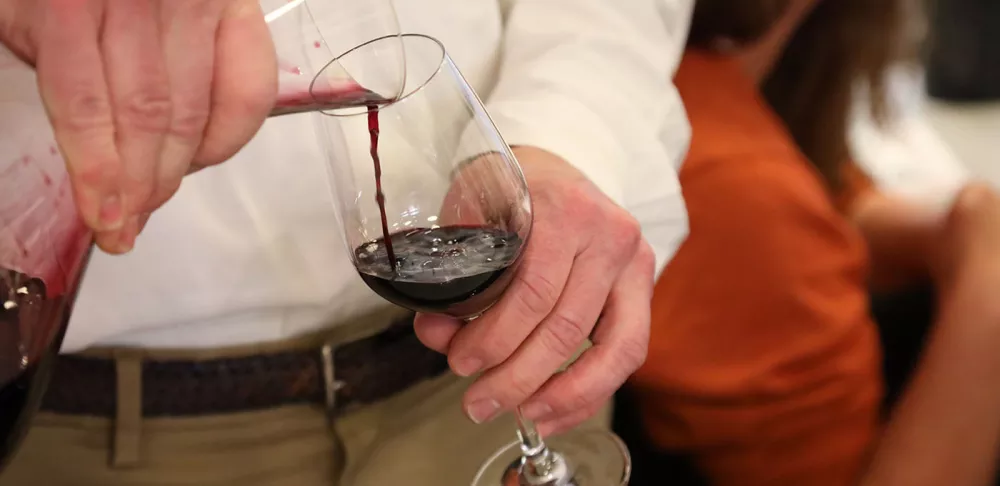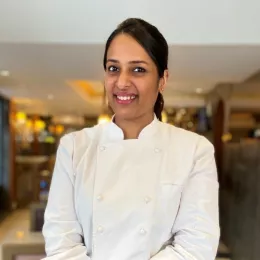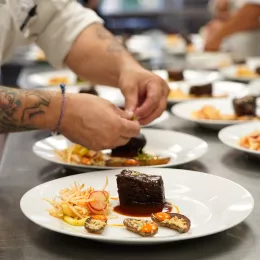In honor of International Cabernet Sauvignon Day, ICE’s Dean of Wine Studies and Master Sommelier Scott Carney weighs in on the wide variety of stemware, including what’s best for a boat.
There can be an overwhelming number of options when stocking your barware collection. Do you really need a special glass for every type of grape? Is a Champagne flute the best bet for sparkling celebration wines? Or what about the coupe? (Side note: was the coupe really modeled after an unspeakable body part of Marie Antoinette?)
Scott Carney, Dean of Wine Studies for ICE’s Intensive Sommelier Training and Master Sommelier, took the time to share some insights on how to choose the right wine glasses for you.
Do I really need fancy wine glasses?
Probably not. As with most things related to wine, it depends on how deep you want to go into the nuances of grape varieties and the age of the vintage. You can certainly find obscurely specific stemware based on particular factors, but the general wisdom across the industry is that for the vast majority of people, a handful of all-purpose (or AP) white wine glasses and red wine glasses are all you really need.
That being said, if you’re looking to stock a restaurant or wine bar with a high-brow wine program, that may be different.
“It’s all contextual,” Mr. Carney explains. “What you do at home with whatever limited space you have will be different than a restaurant making a statement about their wine program with their glassware.”
The other thing to consider is that, like fashion, the wine world has trends that fall in and out of favor. In the 1980s and '90s Maximilian Riedel, of the Austrian crystal company, made an effective argument (and a fortune off the idea) that stemware specially designed based on grape variety would bring that particular wine to its highest potential. So if you are a ‘Burgundy only‘ household you can spring for the special Burgundy glass, but otherwise save your money — and your cabinet space — and keep it simple.
According to Mr. Carney and many of his fellow Master Sommeliers, AP glasses are actually the preferred standard in the industry today, even among high-end restaurant wine programs.
“Many restaurants use an identical glass for their red and white by-the-glass pours,” he says. This philosophy also extends to selecting stemware for his sommelier training classes. “We’re trying to create as clinical a setting as possible, so we actually want to neutralize the impact of the glass so that every wine can be evaluated evenly.”
Related:Wine Terms to Know
So what wine glasses should I buy?
Classes at ICE use the Zwilling Predicat line, but Mr. Carney has previously used a Riedel multi-purpose glass, which he calls “an absolutely lovely glass.”
He also recommends The One glasses by fellow Master Sommelier Andrea Robinson who quips on her website video “As a mom and a master somm, [my glasses are] dishwasher safe and break-resistant.” Another fellow Master Sommelier, Jancis Robinson out of the UK, has teamed up with tableware designer Richard Brendon to produce a well-regarded glass that can be broadly utilized.
If you’re looking to impress, feel free to splurge on the luxury Austrian crystal brand Zalto, which Mr. Carney calls “glassware for the residing elite,” and describes as “so light and delicate, they’re miraculous…but they can cost up to $100 a stem.”
If that’s a little rich for your blood, don't worry — Mr. Carney’s general guidance is not to spend more than five to $10 dollars per glass.
“You don’t need to go crazy on this, just maintain them and make sure they’re cleaned properly,” he says. That said, he confesses to being a “geek” when he preps his own glassware for dinner parties. “I’m steaming them up and making certain everything is nice — but that’s just part of my nerdy therapy.”
But I definitely need special glasses for Champagne, right?
Nope! Of your Champagne glass options, the coupe glass (also known as the Marie Antoinette glass — a quick Google search will explain the lore there) associated with the post-Prohibition roaring 20s has largely fallen out of favor. When asked if there was ever a moment the coupe was the appropriate glass, Mr. Carney’s immediate response was: “Yeah, for a cocktail.”
While a coupe is a fun idea for an old-timey party, the wide mouth and short stem pretty much guarantee that your bubbles will evaporate quickly if the heat from your hand doesn’t warm it up first — the worst possible combination of things.
With these concerns in mind, you’d think the tall, narrow Champagne flute is the ideal glass for champagne, but that has also recently been debunked. While flutes will always reign supreme when it comes to the effervescent joy of maximizing bubbles for a celebration, the fashion for serious tasters these days is to serve Champagne in a regular AP glass to truly appreciate the complex flavors of the terroir rather than focusing solely on preserving bubbles.
Mr. Carney cites the advent of “grower Champagne” or “farmer fizz” of the early 2000s for this shift. Historically most of the region funneled their grapes to the large Champagne houses, which in turn combined various vintages from a wide variety of farmers to create the consistent NVs (non-vintages) associated with their house brand — but that changed when the farmers decided to make their own wines to highlight the nuances of their particular terroir.
Per Mr. Carney, “In parallel with that came this idea that the wine itself should be explored now. It’s not just about the bubbles, there are soils and a sense of place that can manifest in the wine, and the AP glass was seen as the vehicle for doing that.”
Related: ICE Experts' Advice on Becoming a Sommelier
How many glasses are in a bottle of wine?
As with almost everything: it depends. A 750mL bottle contains approximately 25.4 ounces of wine, so when it comes to serving at home that’s really up to you, but pretty much all wine glasses are designed to be filled to the widest part of the glass. Even if you can fit six ounces into your wine glass, that doesn’t always serve you, especially if you’re opening a special bottle and want to fully appreciate the unfolding of flavor that comes as a wine breathes. Overfilling also limits the space you have in the bowl to swirl and sniff.
When you get into the professional world of sommeliers, there is a lot more to consider. All restaurants will consider their profit margin first and foremost, which means standardizing pours.
For most, this means five ounces per glass (leaving the extra .4 ounces for any residual in the bottle), which translates to five glasses of wine in a bottle.
According to Mr. Carney, beyond the simple division, “There’s hope that [five ounces of wine] won’t last the appetizer and the entree and that you’ll need a second glass somewhere down the line.”
He also cites the relatively recent trend of a “tasting pour,” traditionally about three ounces and offered at a lower price than a full glass. Mr. Carney describes this as a move by restaurants looking to “keep a broad, learning-oriented beverage program, [and] to showcase different grape varieties — people might be nervous or reluctant to spend 22 bucks on something they’ve never had before and don’t know if they’ll like.”
How do we feel about stemless wine glasses?
“If you’re on a boat, maybe,” says Mr. Carney
Between the smudge of fingerprints and the heat transfer from your hand to the wine, these are the least attractive options for most settings. However, jokes aside, Professor Carney makes the point that “these things can be out-reasoned by the context of where you’re drinking it.”
More Scott Carney: Meet ICE's First Master Sommelier






